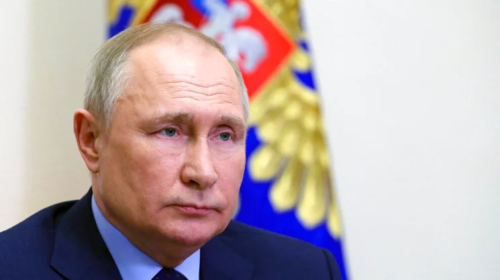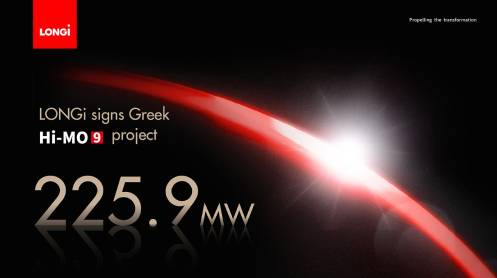Three events occurred in the last week or so involving either Iran or Iraq separately, or both together, that put Russia back front and centre in the Middle East, to the detriment of the U.S. In order of timing, these events were: a series of meetings between Russia’s veteran foreign minister, Sergei Lavrov, and Iran’s senior political and military figures, including President, Ebrahim Raisi; the withdrawal from the Iraqi parliament of the country’s long-time de facto leader, Moqtada al-Sadr, and his 73-member political bloc, the largest group in the legislative body; and, the agreement of a new cooperative roadmap between Iran and Iraq.
On the first point, relating to Russia, prior to the unilateral withdrawal of the U.S. from the Joint Comprehensive Plan of Action (JCPOA, or colloquially ‘the nuclear deal’) in May 2018, the Kremlin had used the loosening up of restrictions in the run up to that agreement being made in 2015 to dramatically increase its presence in Iran, as analysed in depth in my new book on the global oil markets. In the energy sector alone, before 2018 initial field exploration and development agreements were signed by GazpromNeft for the Changouleh and Cheshmeh-Khosh oilfields, Zarubezhneft for the Aban and Paydar Gharb fields, and Tatneft for the Dehloran field. These were on top of the previous memoranda of understanding (MoU) signed by Lukoil and the National Iranian Oil Company (NIOC) for studies of the Ab Teymour and Mansouri oil fields.
Even more significant was the concomitant signing of a 22-point memorandum of understanding (MoU) by Iran’s deputy petroleum minister, Amir-Hossein Zamaninia, and Russia’s deputy energy minister, Kirill Molodtsov, which included not just the studies and plans for exploration and extraction of oil but also for the transfer of gas, petrochemical swap operations, research on the supply and marketing of petrochemical products, the manufacture of oil equipment together with local Iranian engineering firms, and technology transfer in the refinery sector. Discussions by early 2018 were also underway for adjunct developments to this 22-point MoU that included the dual use of Iranian seaports and airports by Russia for both civilian and military purposes. These adjunct plans, however, were suspended due to the U.S. withdrawal from the JCPOA in May of that year, and were later rolled into the same concept of dual use contained in the landmark 25-year agreement between Iran and China, first reported anywhere by this author on 3 September 2019.
At the most recent meeting in the last week or so, OilPrice.com understands from sources close to Iran’s Petroleum Ministry that: “Lavrov and Raisi discussed expanding cooperation across all fields, in line with the original [22-point] MoU.” He added: “This also included logistical cooperation for the movement of goods, including where necessary oil and gas and related products, both from Iran to Russia and Russia to Iran, and also elements of the special [dual use civilian and military] cooperation that had been agreed four years ago.” Iran’s foreign ministry itself noted that Lavrov’s visit was aimed at: “Expanding cooperation with the Eurasian region and the Caucasus.” At the 19 January meeting between Russian President, Vladimir Putin, and his Iranian counterpart, Raisi, added the Iran source, there was “extensive discussion” on Russia finally providing Iran with the S-400 missile defence system and Sukhoi Su-35 fighter jets that it has been promising for several years. Russia has perennially linked these military hardware requests from Iran to other of its own security concerns across the Middle East, with Syria, in particular, an area in which Iran and Russia had long sought to come to a decisive working arrangement.
On the second point, relating to Iraq’s al-Sadr, the radical cleric had long seen the notion of bringing together all of Iraq, including the semi-autonomous region of Kurdistan in the north, and keeping foreign influence – including Iran’s – at a minimum as his principal political philosophy. In the lead-up to his withdrawal from Iraq’s parliament, and the subsequent withdrawal of the 73 members of his faction from it, al-Sadr had been looking to create the country’s first true majority government since the fall of Saddam Hussein in 2003. This was to have been done through an alliance struck with the bloc of Iraq’s Speaker of Parliament, Mohamed al-Halbousi, and the Kurdistan Democratic Party (KDP). “The key problem for al-Sadr was that if this were successful, it would have excluded the [Iran-controlled] Coordination Framework from any legitimate power, and Russia too, given al-Sadr’s extreme dislike of any foreign interference in Iraqi affairs,” the Iran source exclusively told OilPrice.com last week. “Russia has basically controlled [Iraq] Kurdistan’s oil sector since 2017, and looked to build on that to extend its influence in the south of the country, to form effectively one client state of Iran-Iraq, and al-Sadr’s plan if it had succeeded would have destroyed that,” he said. “It was the Kurdish grouping [the KDP] that stopped al-Sadr’s plan, as it side-stepped the usual convention relating to distributing political positions [that would have seen the Patriotic Union of Kurdistan present the presidential candidate] by just presenting its own guy,” he added. “So, now we are back where we were, with no clear power figure in Iraq, which is exactly the way Iran and Russia want it,” he concluded.
On the third, and final, point, relating to the new cooperative roadmap between Iran and Iraq, with no clear leader in sight in Baghdad, Tehran was quick to announce several major initiatives between the two countries. As OilPrice.com has been highlighting for several years now, one of the most important methods of securing power across the Middle East is to consolidate control of the energy distribution grid – not just the movement of electricity but of oil and gas too – and this has been the focus of all of Iran’s latest plans, backed fully by the Kremlin. Russia has already seen in Europe the power that comes from making countries reliant on its oil and gas exports, and the U.S. also knows full well the power that Iran has over Iraq by dint of its ongoing supply of electricity and gas to Iraq, which has been the cause of intense debate between Washington and Baghdad for years. Last week, Iraq’s Deputy Minister of Oil for Exploration, Bassem Mohammad Khazir, stated that a roadmap should be prepared for the future steps and goals of Iraq and Iran, adding: “Another important issue is Iranian technology and products…For example, this country already has a high capacity in many sectors such as power cables, pipes and fittings and up-to-date technologies that can be transmitted to us.”
He added: “The CEO [chief executive officer] of the National Iranian Oil Company emphasised the issue of training and transfer of technology and technical equipment in his remarks…The issue of transfer of expertise and technology is very important and we should be able to cooperate in this field.” This new roadmap also has “obvious synergies with the range of deals discussed between [Russian Deputy Prime Minister] Alexander Novak and senior Iranians at the end of May, which includes energy, agricultural, and transport projects and further cooperation in the financial and banking sector, oil, gas, petrochemicals, and nuclear energy,” said the Iran source





